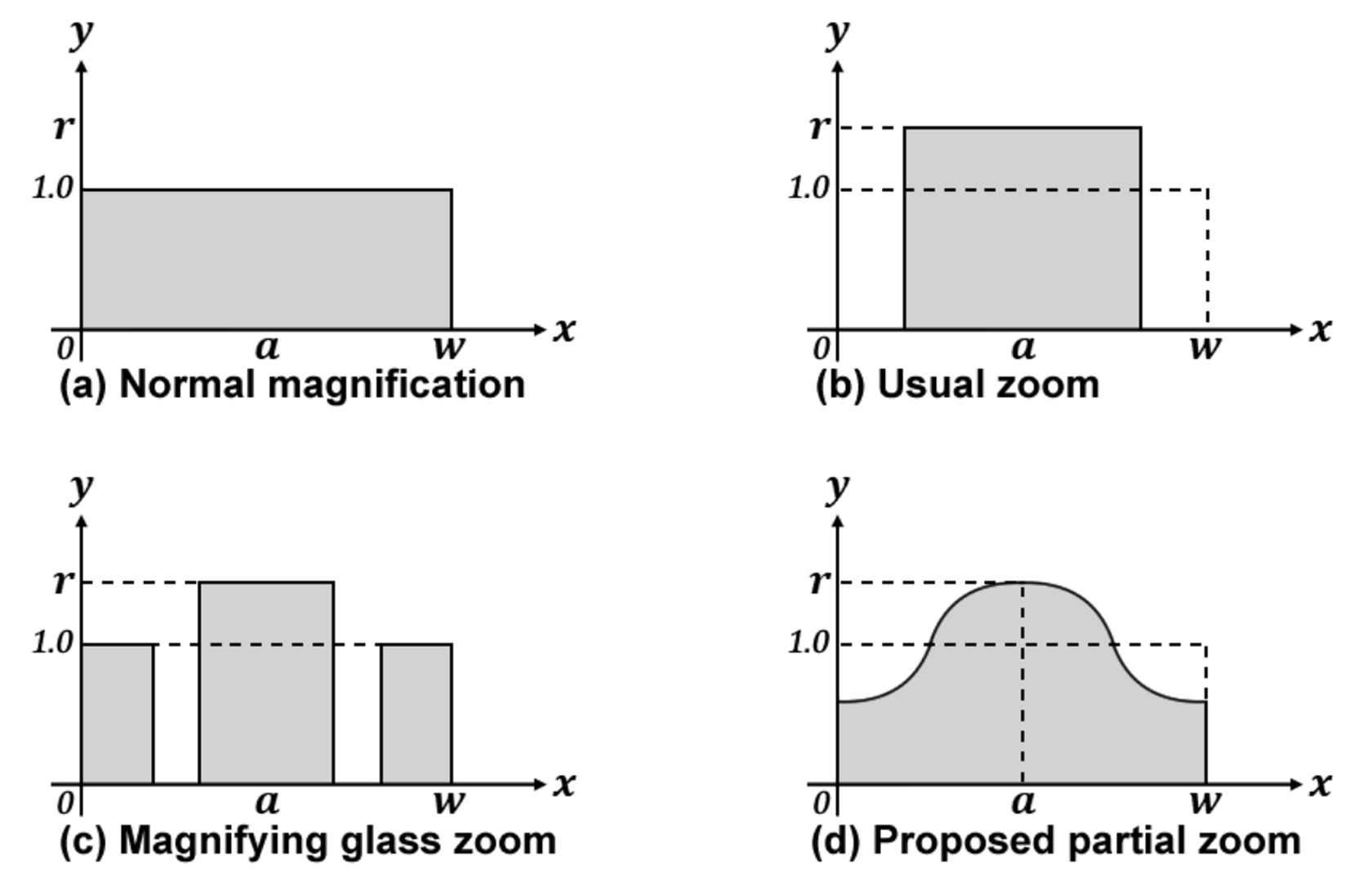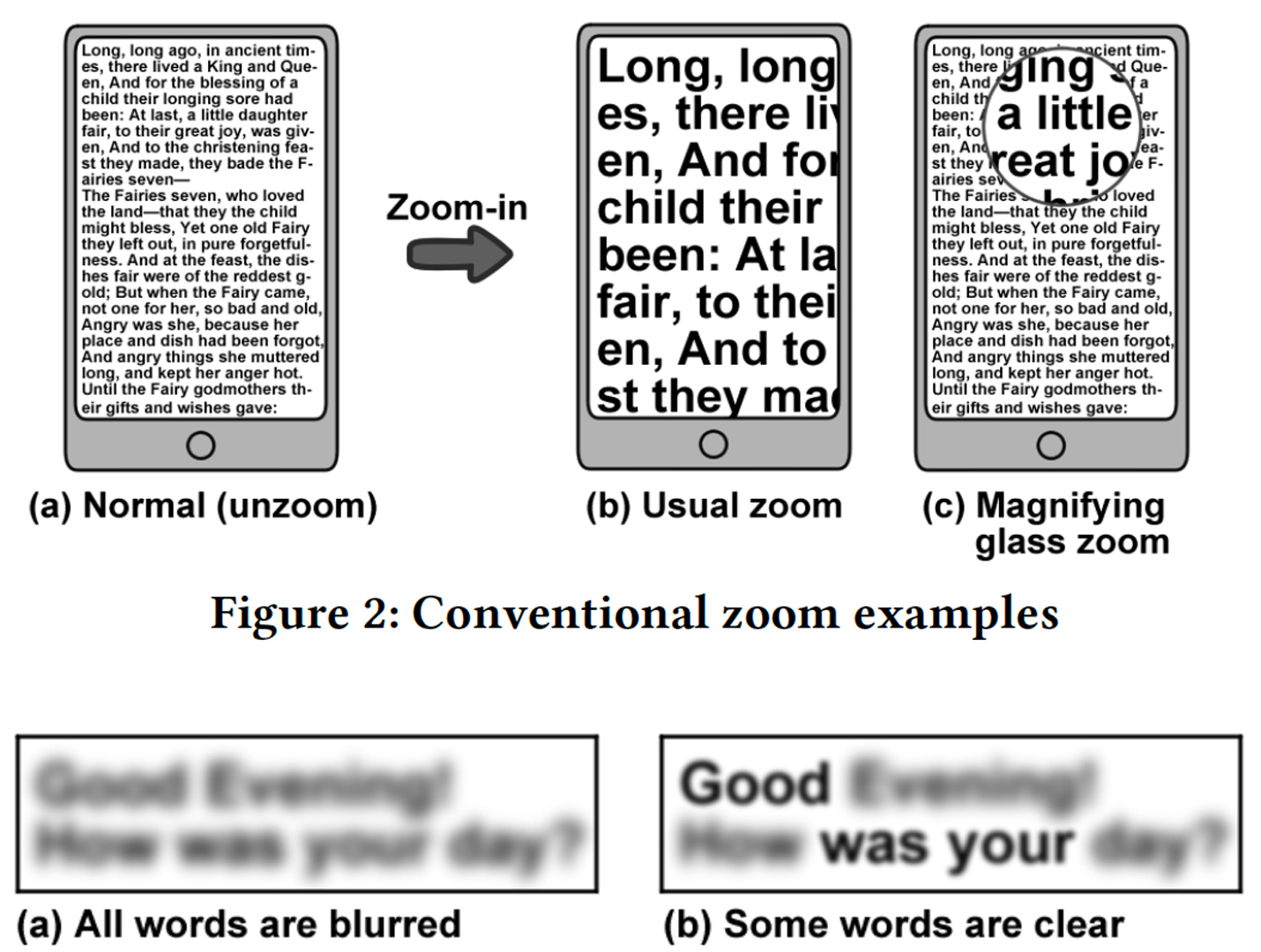“Partial Zoom on Small Display for People Suffering from Presbyopia” by Fang, Funahashi, Mizuno and Iwahori
Conference:
Type(s):
Entry Number: 04
Title:
- Partial Zoom on Small Display for People Suffering from Presbyopia
Presenter(s)/Author(s):
Abstract:
When presbyopia people use digital devices, they often zoom in the display, because it is not in focus when they move it close to face. We have proposed the automatic display zoom system for presbyopia people [Fang and Funahashi 2018]. However, some of the information on the small display has gone out of it after zooming in (Fig. 2(a) to (b)). It is necessary to scroll it frequently, and a bother. On the other hand, a conventional partial zoom means like a magnifying glass is also usually provided (Fig. 2(a) to (c)). The part around a zoomed area is cut off, and it is necessary to move the glass frequently too. People sometimes want to skim through sentences and understand an overview. By the way, although it is difficult to read blurry words (Fig. 3(a)), you can guess and read a sentence includes the blurry words when some other words are clear (Fig. 3(b)). Therefore, we reconsider the zoom-in method for presbyopia people. For example, the area paid attention is zoomed in to read clearly, and the magnification rate of the area around it is gradually reduced to zoom-out rate so that all information is displayed in the small display even though some words are zoomed out. It is expected that you can guess and read also the unzoomed- in words like blurred words around the clear zoomed-in words. We propose a suitable partial zoom-in function that allows you to skim a document.
References:
- Huiyi Fang and Kenji Funahashi. 2018. Automatic Display Zoom for People Sufferings from Presbyopia. In ACM SIGGRAPH 2018 Posters (SIGGRAPH ’18). 2.
https://doi.org/10.1145/3230744.3230754 - George McConkie and Keith Rayner. 1975. The span of the effective stimulus during a fixation in reading. Perception & Psychophysics 17 (11 1975), 578–586. https://doi.org/10.3758/BF03203972
- Keith Rayner. 1975. The perceptual span and peripheral cues in reading. Cognitive Psychology 7, 1 (1975), 65 – 81. https://doi.org/10.1016/0010-0285(75)90005-5
Keyword(s):
Additional Images:







